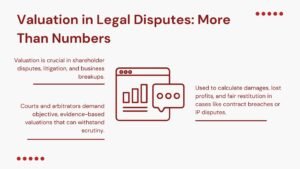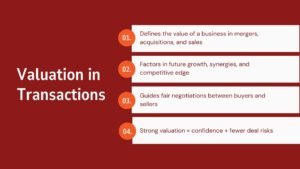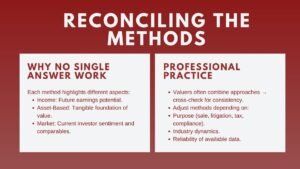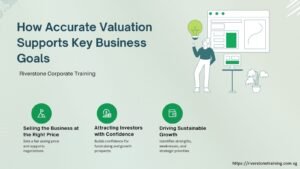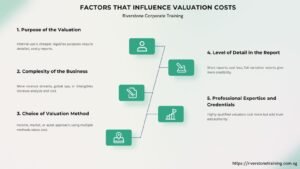Investment Decision-Making Training Using Company Valuation Metrics
Investment Decision-Making Training Using Company Valuation Metrics
There is one principle of successful investing, and this is the fundamentals of value. To the corporate investors as well as individuals, a defining skill is having the option to understand the valuation metrics and use them in decision making regarding investment. An investment decision training program based on the company valuation metrics would give the participants analytical and strategic means to perceive the opportunities in a non-bias fashion, identify mispriced assets and deliver optimal performance on the portfolios. In addition, the program also explores company valuation in Singapore, helping participants understand how regional market dynamics and valuation standards influence investment decisions and portfolio performance.
This training serves as the bridge between financial modeling and practical investing, and it is based on the enhancement of data into actionable insights that are able to support evidence based and confident decision making. By combining quantitative rigor with strategic thinking, the program enables participants to develop a disciplined approach to investing. They gain the ability to evaluate risk-adjusted returns, anticipate market inefficiencies, and structure investment portfolios that balance growth, value, and resilience. Ultimately, this training empowers professionals to make informed, objective, and high-performing investment decisions, turning complex financial data into a practical roadmap for creating long-term value.

Understanding Key Valuation Metrics
It is important to note that the participants start with the discussion of the most frequently used metrics of valuation including Price-to-Earnings (P/E), Enterprise Value to EBITDA (EV/EBITDA), Price-to-Book (P/B), and Free Cash Flow Yield. The trainers discussing each of the metrics describe what they mean, how to compute them and when they are applicable.
In the training, the importance is that the valuation ratios can solely be placed in context. A low P/E can imply that it is underpriced – or it can be that it shows deteriorating returns. Through the comparison of valuations in the industry, time and market trends, professionals are taught by comparing these valuations to establish that true opportunities exist as opposed to value traps.
Other sophisticated measures of performance study by the participants include Economic Value Added (EVA) and Return on Invested Capital (ROIC) which directly correlate profitability with the creation of shareholder value. The training also introduces participants to more sophisticated performance measures, such as Economic Value Added (EVA) and Return on Invested Capital (ROIC). These investment decision-making training using company valuation metrics Singapore go beyond surface-level ratios to directly link profitability with the creation of shareholder value, providing deeper insight into whether a company is generating returns above its cost of capital. By mastering both basic and advanced valuation metrics, professionals gain the tools to analyze investment opportunities comprehensively, make informed comparisons, and structure investment decisions that maximize long-term value creation.
Integrating Valuation into Investment Analysis
Training modules show how the valuation measures are inputted in the wider investment analysis systems. To equity investors, metrics are used to determine companies that are involved in trading below intrinsic value. In the case of corporate decision-makers, they steer mergers, acquisitions as well as divestments decisions.
The participants will use valuation information in models like Discounted Cash Flow (DCF) and Relative Valuation, and they are trained to balance quantitative findings with qualitative ones including quality of the management, brand recognition and positioning in the market.
Through the integration of financial ratio alongside the cash flow prediction and sensitivity analysis learners can have a multi dimension view on investment prospects. This holistic methodology equips them to assess risk and opportunity more accurately, anticipate the impact of market changes, and make decisions that optimize portfolio performance or corporate value. Ultimately, the valuation-based corporate and individual investment course empowers learners to integrate analytical rigor with strategic judgment, producing well-rounded and confident investment decisions.
Decision-Making Under Uncertainty
There is no risk free investment decision. The training focuses on the application of scenario and sensitivity analysis in order to verify the assumptions in different markets. The participants also get to understand how to add valuation measures to genuine variations in interest rates, price inflation, and rivalry changes to have a strong decision-making process. This approach enables them to stress-test valuation models under different conditions, ensuring that decisions are resilient across a range of potential market environments.
The teaching aspects that are also addressed by instructors include the behavioral aspects which include teaching the participants on how to identify biases like overconfidence and herd behavior, which may corrupt their valuation judgment. Such middle way leads to disciplined and rational investment thinking. This balanced methodology ensures that investors and corporate professionals can combine analytical rigor with strategic insight, leading to more consistent, rational, and high-performing investment choices.
Conclusion
Valuation-based investment decision-making practice will turn the data-driven analysis into action. With skills in quantitative and qualitative aspects of valuation, the participants can know how to find the real value, how to handle risks, and make decisional investment.
In the volatile market, knowing what is valuable is an attribute of satisfied investors not because they are acting according to the trend. This education provides them with the means to do so precisely that valuation metrics become the guide by which to make any viable investment decisions. By combining analytical rigor with strategic insight, this education equips investors and corporate professionals to navigate uncertainty confidently, prioritize high-value opportunities, and execute investment decisions that optimize returns. Ultimately, the program instills the discipline and methodology needed to transform financial data into practical, actionable, and sustainable investment outcomes.



